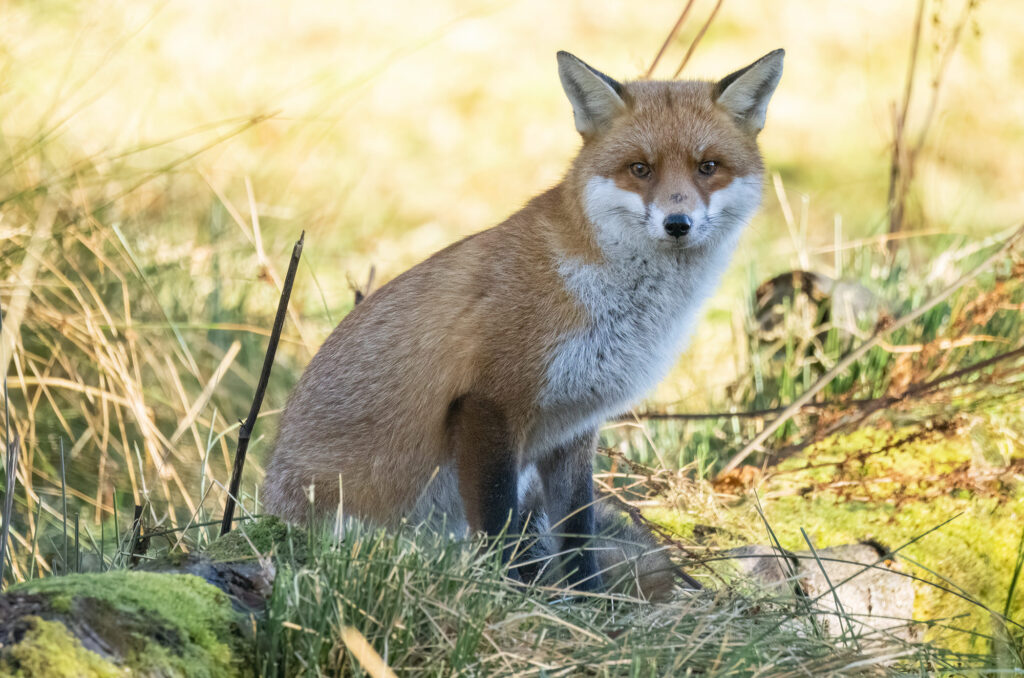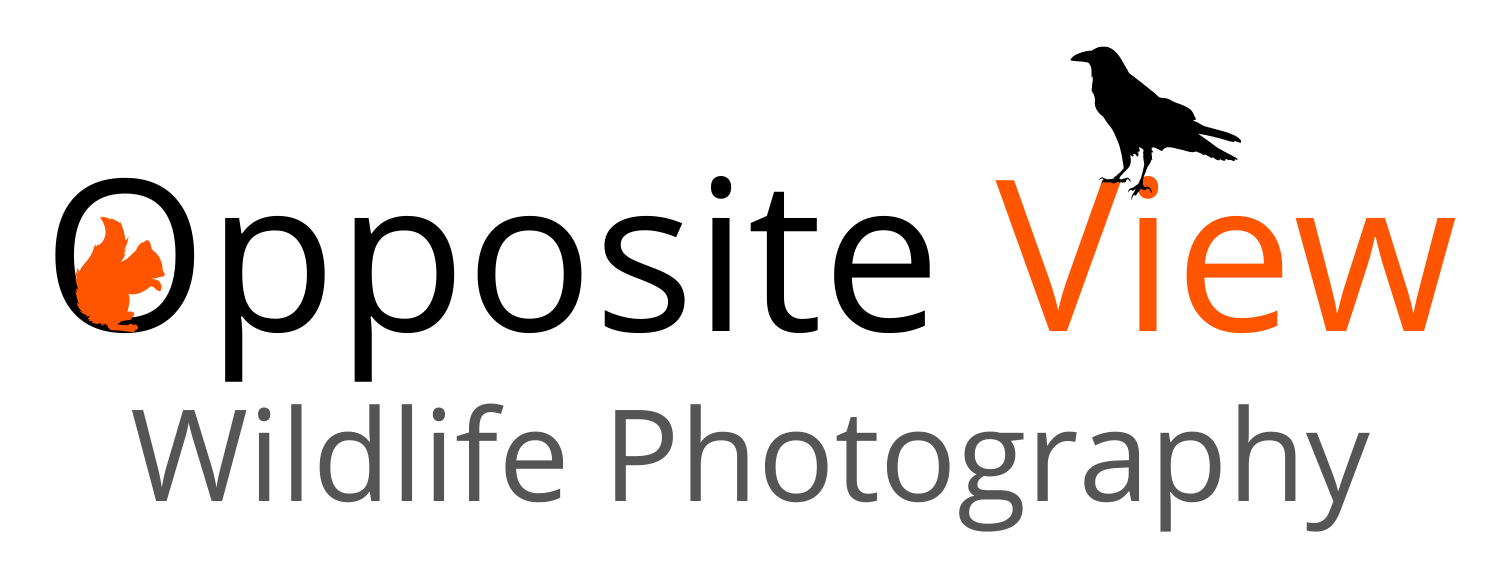Backlit by the low winter sun, the roe deer grazed on the brow of the hill. I fired off shots from behind the trees and bushes lining the field. The deer were fully aware of my presence only metres away. Not only would they have picked up my scent but long before that I had alerted them to my slow approach by talking to them, repeating the phrases that they now associate with the crazy woman with the camera. I was out of sight but not out of mind.
The roe does were relaxed. This year’s kids were relaxed. I wasn’t relaxed. I glanced at my watch and it confirmed what I already suspected – time had run out. My lunch break was nearly over and the day job insisted I return to my home office. Turning to check the quietest route away from the deer that were still busy browsing, I froze. A fox stood a short distance away in the woods and hadn’t noticed me standing there. Its attention was focused on the deer in the field but I knew that if I lifted my camera, it would see me, get a fright and run. So I just watched as it trotted past me, eyes locked on the activity in the field.
Once the risk of frightening it had passed, I focused on it as it jogged away and prayed it would look to the side or over its shoulder so I could capture a decent image. It didn’t and, in a few moments, it had loped into the woods beyond. I took a deep breath and turned to take one last look at the deer before heading home. Roe doe Beta had stopped grazing and was looking directly at me. Her expression seemed to say “That went well, didn’t it?” I couldn’t disagree with her. While my impression of a tree was apparently coming along nicely, I trudged home without a decent photo of the fantastic fox.
This may sound like a tale of woe but that tantalizingly close fox encounter wasn’t the only one from the past couple of months – others were more successful, one was simply breathtaking, and all gave me an insight into fox behaviours that I hadn’t witnessed before.
Paw patrol
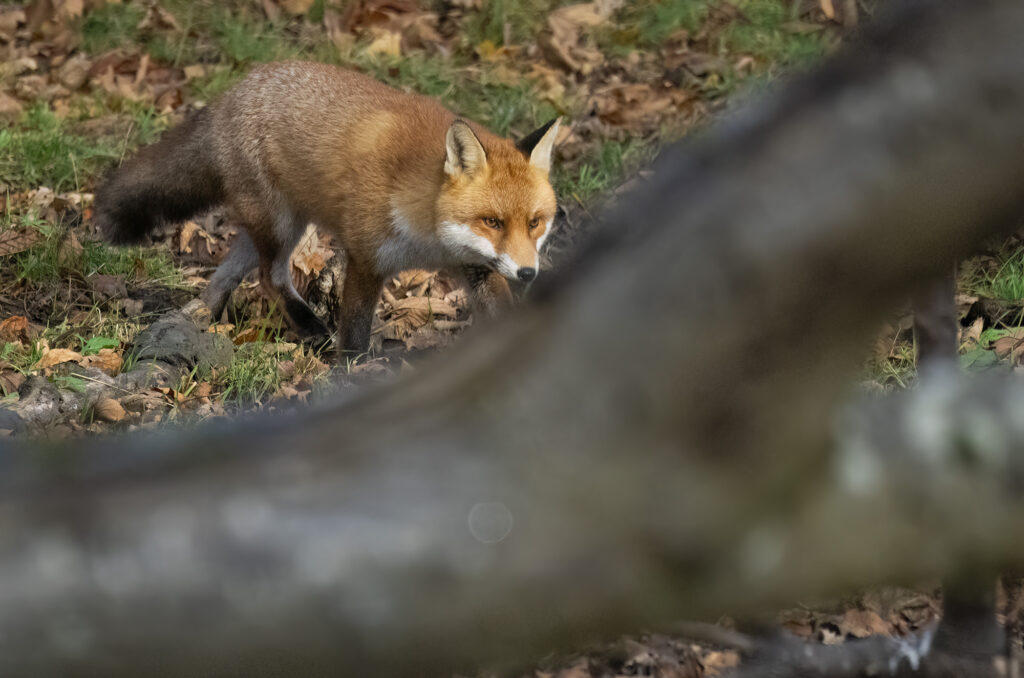
A group of foxes is sometimes known as a skulk of foxes. Although some of the connotations of “skulk” aren’t helpful when trying to change negative attitudes towards foxes, it is certainly appropriate concerning moving quietly and stealthily. As already noted, foxes can seemingly appear out of nowhere but once you get to know their territories, you can begin to anticipate where they might pop up and winter is the perfect time to study their movements.
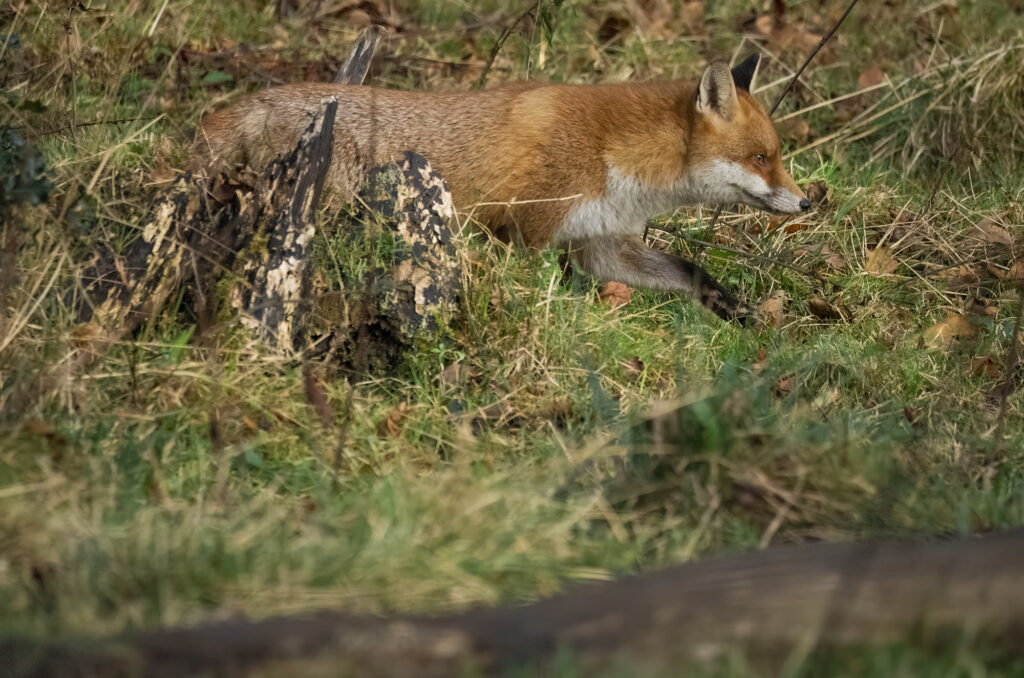
In January, I noticed two foxes seemingly patrolling the same area. At one point, it seemed like one was following the other. January is a month of upheaval for foxes. It marks the height of both mating and dispersal season – a time when last year’s cubs, along with some older residents, set off looking for new territories and mates. This seasonal restlessness leads to dramatic shifts in fox populations, with some moving miles away while others compete for dominance within their familiar range.
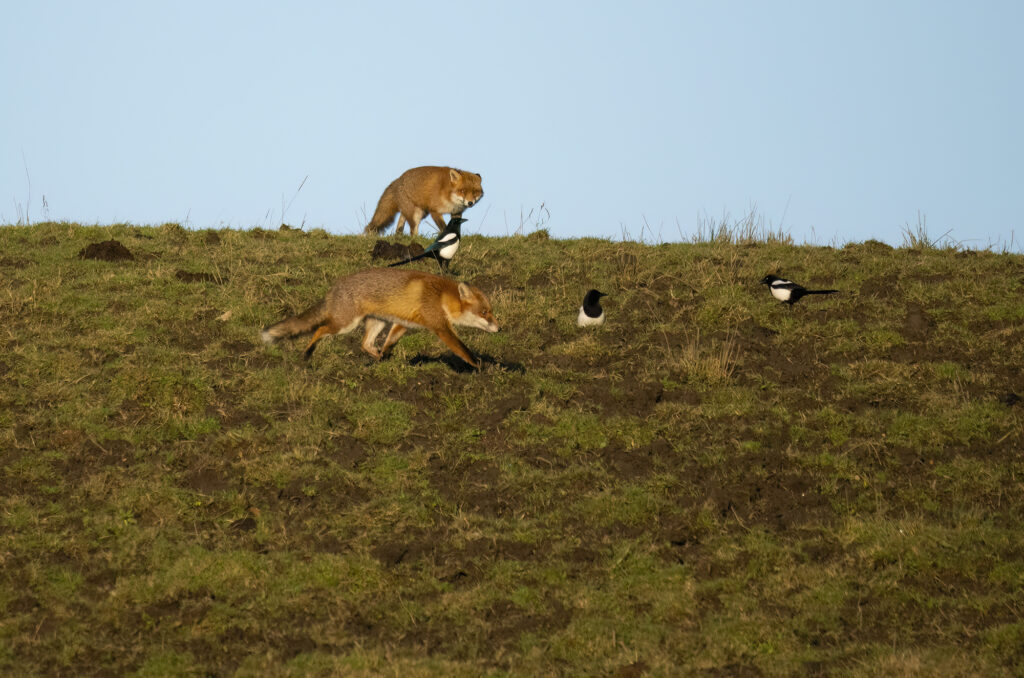
Research has revealed distinct patterns in the movements of territory-owning foxes. One involves patrolling the entire boundary of their domain, ensuring rivals stay at bay. More commonly, however, foxes explore different sections of their territory, maximising their chances of finding food. If they were to focus on the same hunting ground repeatedly, prey populations would dwindle, while untouched areas nearby could be teeming with opportunities.
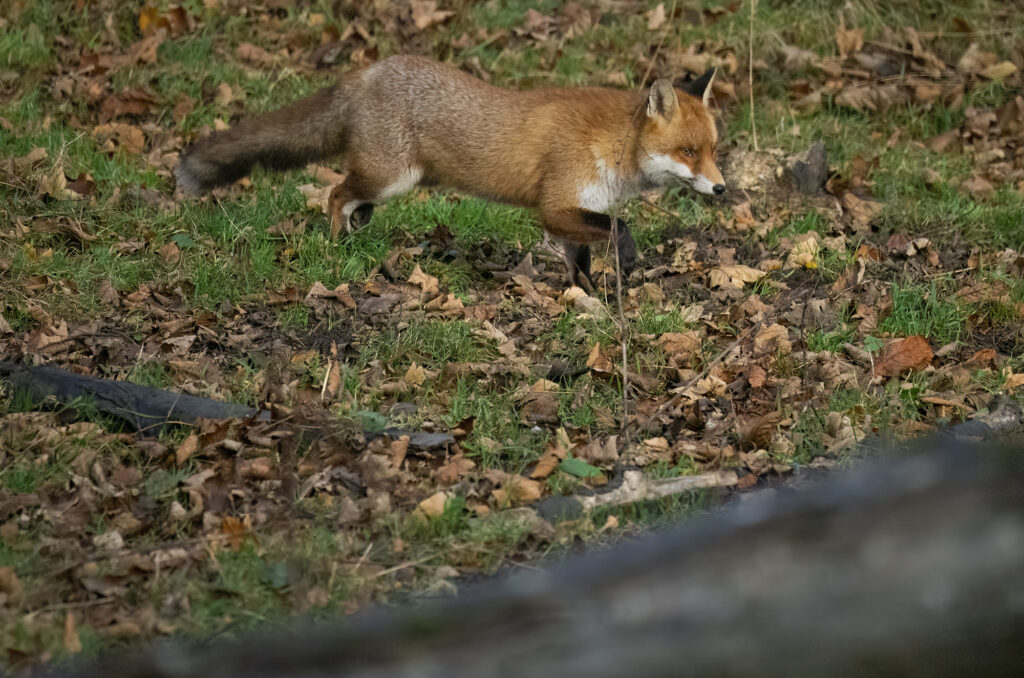
Foxes navigate the landscape in a distinctive zigzag pattern, their well-worn routes etched into the grass over time. I am becoming familiar with the routes of these local foxes but I know there is still much to learn and persistence and patience during winter will be key if I want to find cubs to watch in spring.
Wormy earth
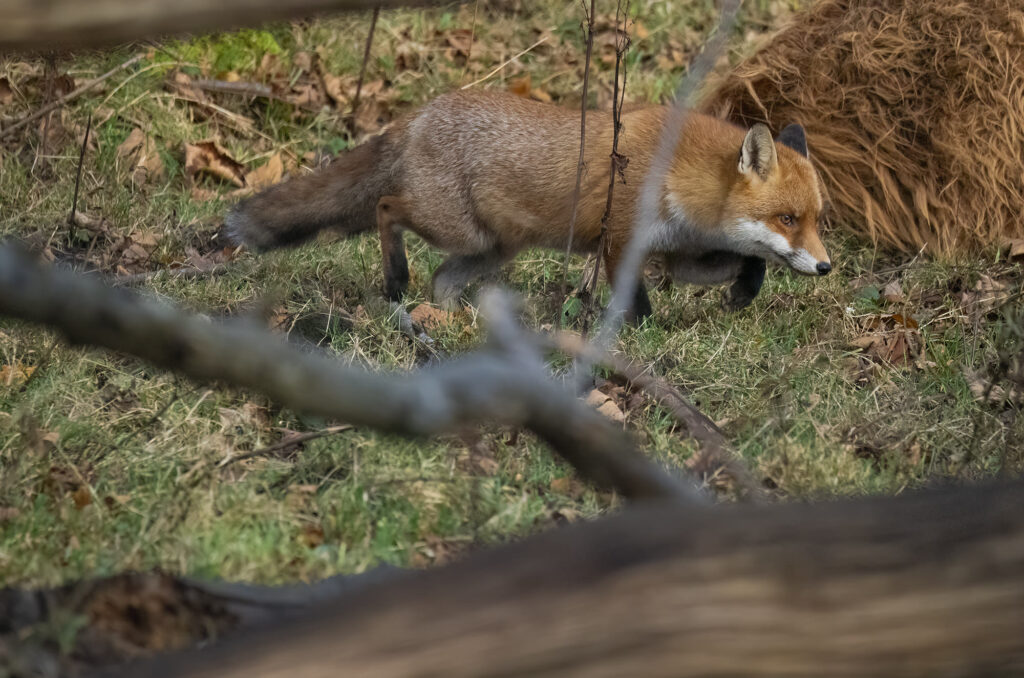
As well as a wealth of wildlife, the local urban country park is home to highland cattle. I have become familiar with the stunning sight of these shaggy red (and sometimes black and caramel-coloured) beasts grazing and relaxing in the fields. Another rust-coated animal that is much harder to glimpse also frequents the fields and winter is a great time to see them there.
Yes, the red foxes can be spotted trotting between the bulk of the coos and, in recent weeks, I’ve seen them there on a few occasions. At first, it seemed that they were crossing the field to get to areas of cover, such as the woodland and the scrub next to the railway line. But I soon witnessed them feeding in the fields.
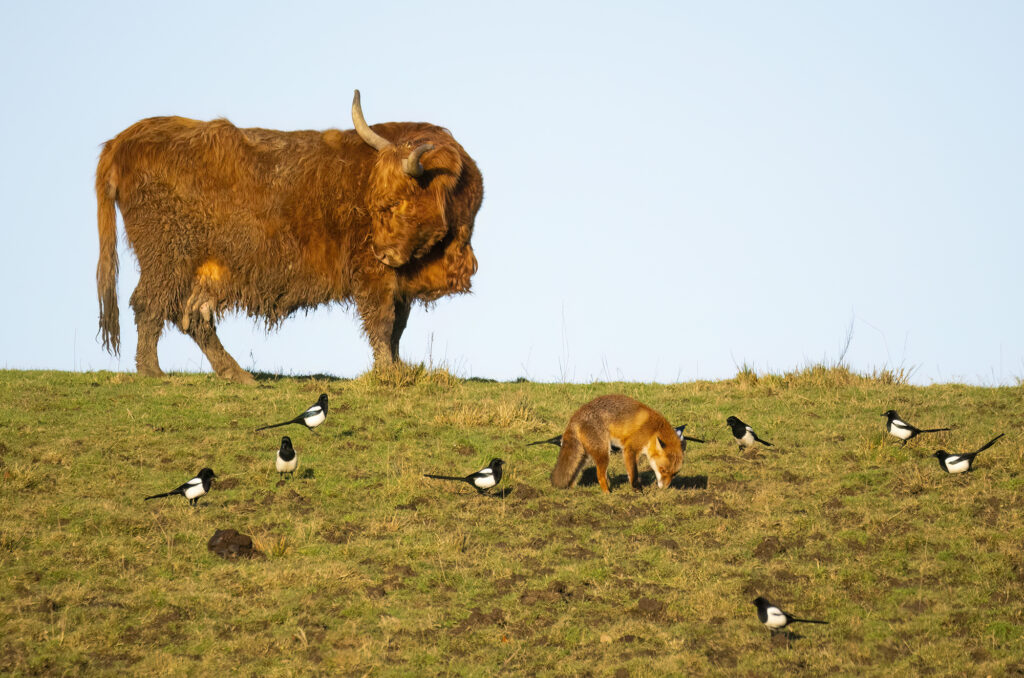
The highland cattle provide the perfect preparation for a meal of earthworms. The cows churn the soft ground as they trudge across the field, turning the soil over and exposing the worms for the foxes to feast on. This behaviour also attracts many local magpies, who often follow the foxes. They may be looking for an easy meal or simply wanting to torment the foxes, based on the video below. Although it was a struggle to get decent photographs of this from a distance, it was fascinating to watch.
Caught caching
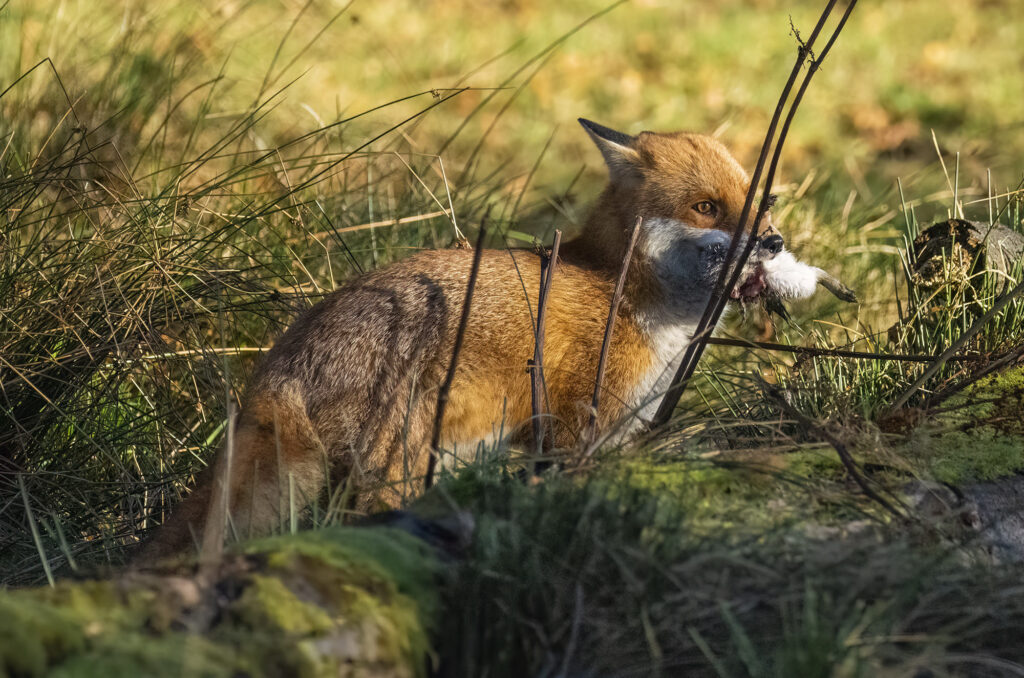
One of my top tips for any budding wildlife photographer is to learn to stand still. It’s often easier said than done. In the fast-moving world we all live in, it’s easy to fall into the trap of staying on the move. On a lunchtime walk away from your desk, the temptation can be to cover as much ground as quickly as possible. But I’ve found that returning to the same spots and stubbornly staying put, even when it seems nothing will happen, can be the best way to spot wildlife – particularly foxes. As I’ve already noted, these creatures regularly patrol their territories. So, stand still in the right spot and you might be lucky to have a close encounter.
And that’s exactly what happened on a frozen lunchtime in late November. I stood in a familiar spot at the edge of a field, looking for roe deer. I was nearing the end of my break and was ready to give up and head back to my home office when, out of nowhere a doe appeared. I recognised her and spoke quietly to her as usual, but she seemed distracted and moved off quickly. I captured a few images and watched her march smartly away.
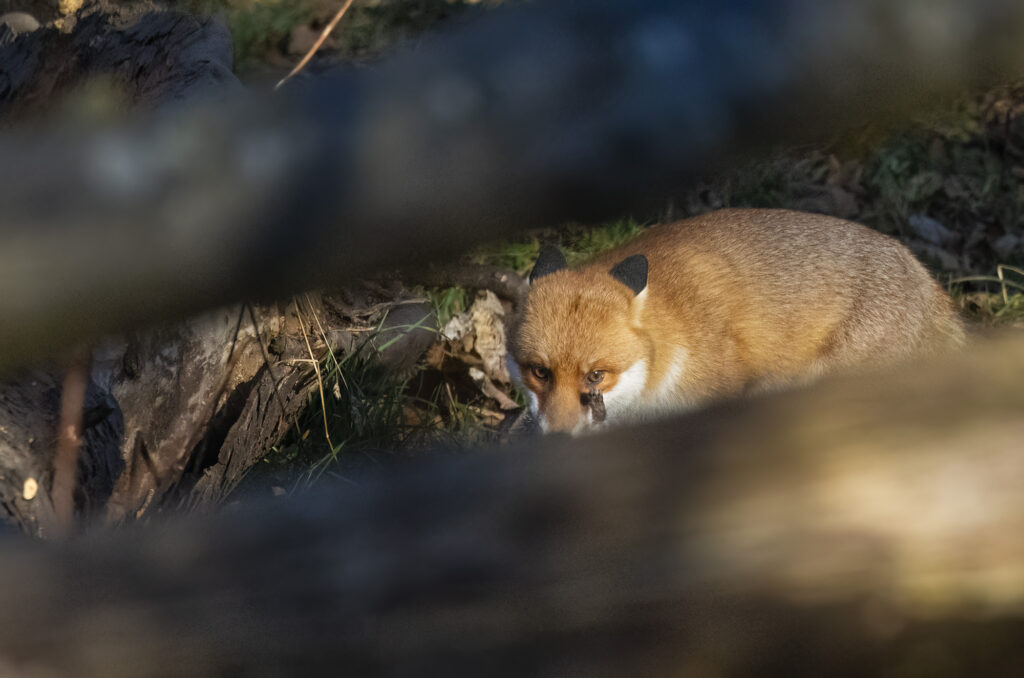
When I turned around to face the direction she had come from, a fox was trotting down the hill towards me. I quickly locked focus on the fox and tried to take as many photos as possible before it disappeared. But it kept coming closer. I then realised that it had a dead grey squirrel in its jaws.
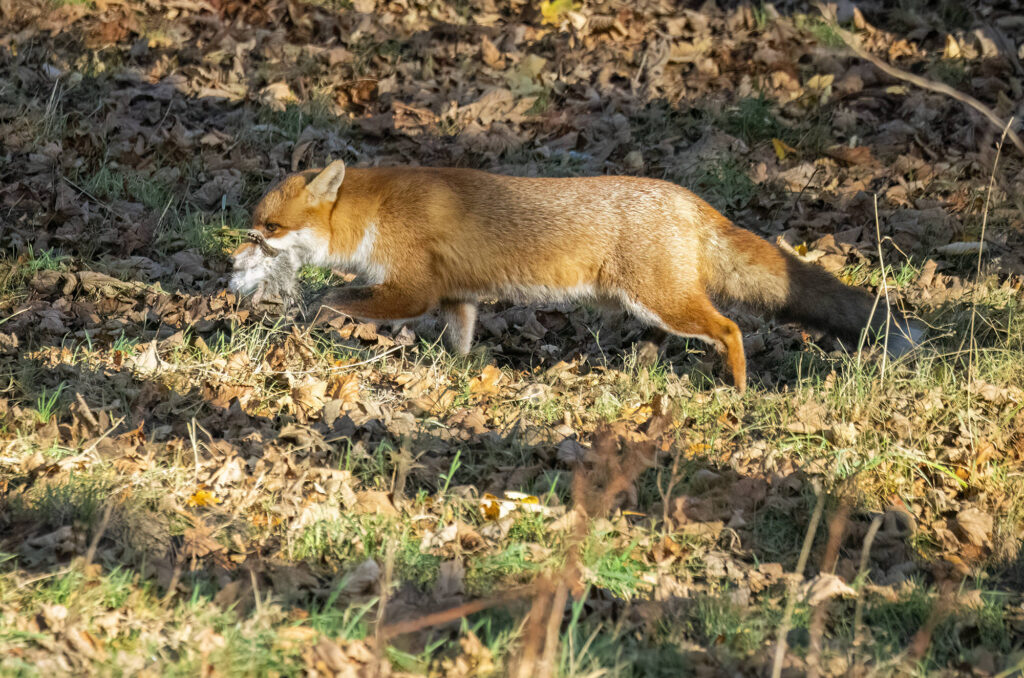
I continued to shoot and it kept coming until it was metres away from where I was doing my best impression of a statue. It paused behind a fallen log out of view and seemed to take a few gulps of its prey, although I couldn’t see clearly.
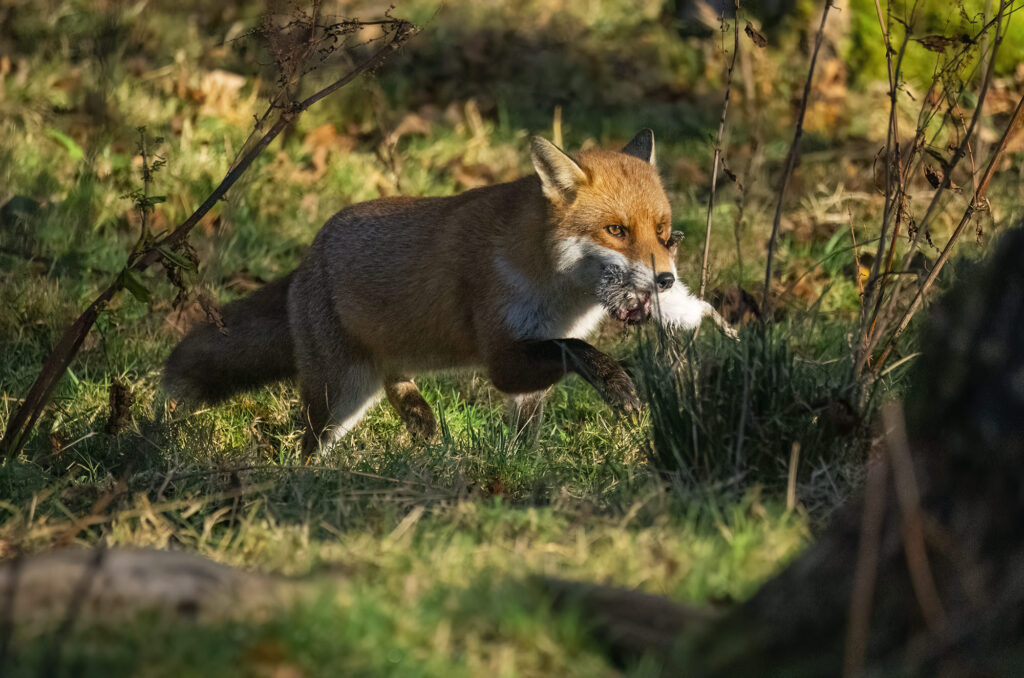
Then it reappeared without its prize, hopped onto the log and sat there while a nearby magpie rattled at it in frustration. It felt like it was there for ages, posing for me, but, in reality, it was only minutes before it hopped down from the log and trotted slowly away. I can only assume that it had cached most of the squirrel behind the log and was planning on returning for it later. I never did find out where the squirrel’s head was.
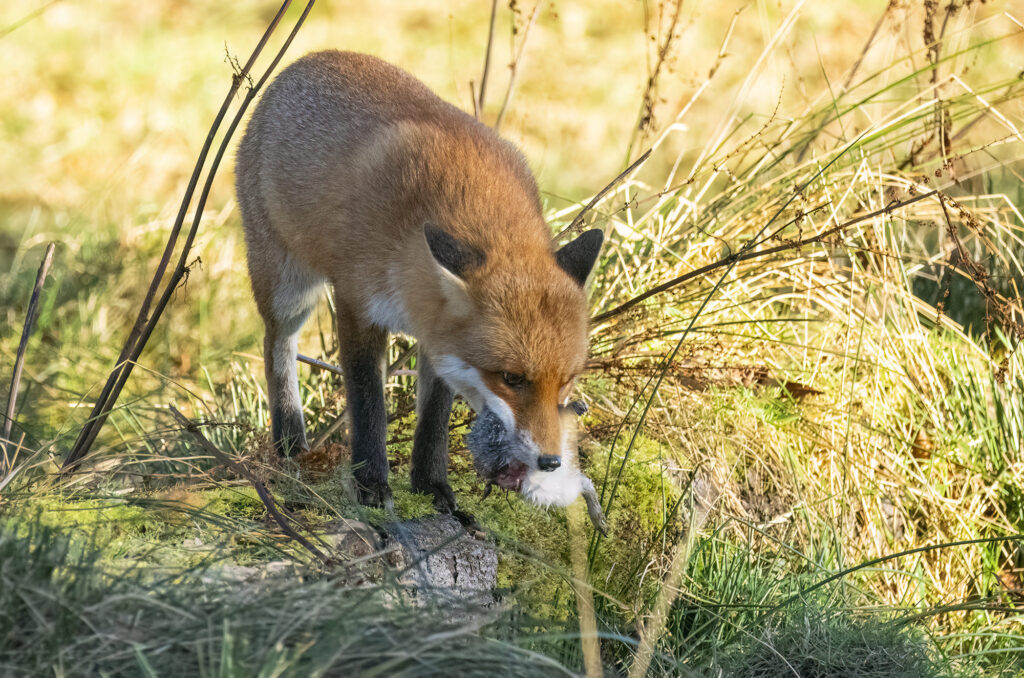
While adaptability is key to the success of foxes in all habitats and particularly urban environments, they are also creatures of habit. Repeat visits to the same spots have delivered some incredible moments with them in the winter months. Standing still has enabled me to move my fox photography forwards and I can’t wait to see what encounters springtime will bring.
